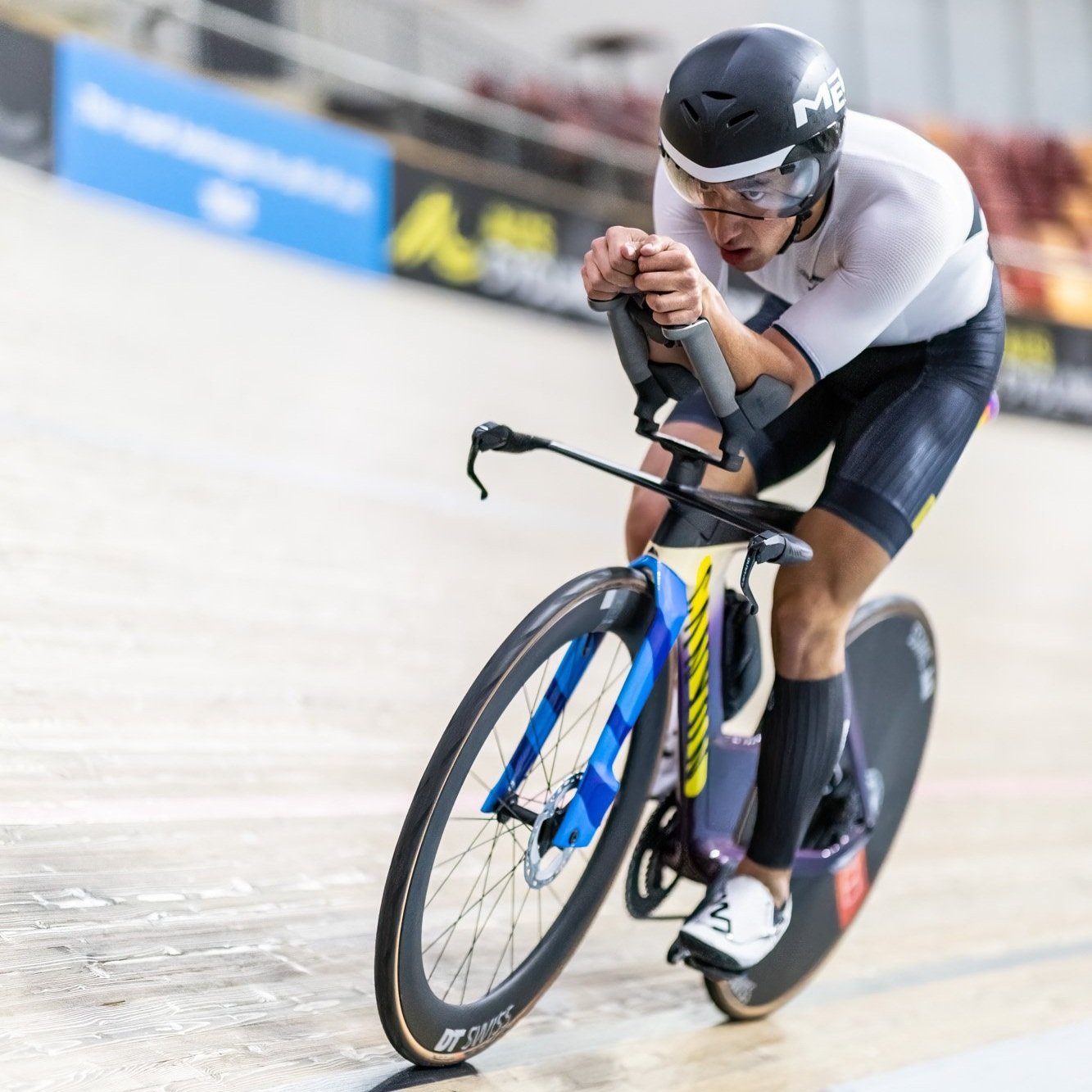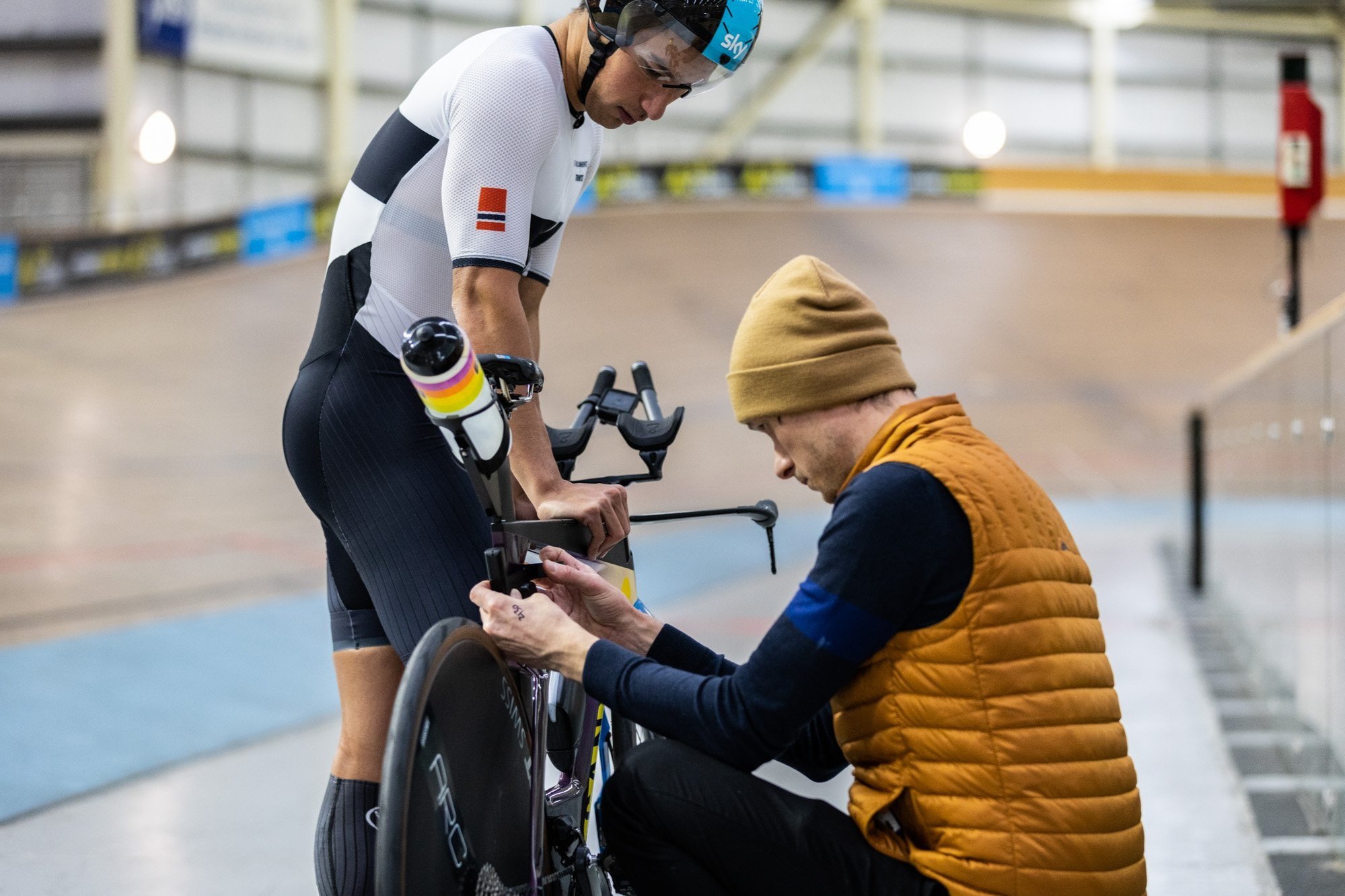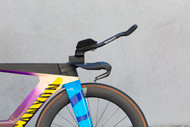Canyon Speedmax - Cockpit Upgrade Testing Review
12th Jan 2024
The Canyon Speedmax CF SLX and CFR triathlon superbikes are some of our favourite bikes of the disc brake era. It’s always a challenge to make an amazing product better, but that’s precisely what our Canyon Aerobar solutions aims to deliver, and as our testing demonstrates, it is precisely what we were able to do with Daniel Bloom.
Background
The highlights of the Canyon Speedmax CF SLX (and CFR) include disc brakes, integrated spares storage, integrated and refillable hydration system, nutrition storage, two basebar length options, respectable Tri geometry, and an awesome spacer assembly for cockpit stack adjustment. The Speedmax platform has almost everything the concerning triathlete requires.
Our bike fitting work at Adaptive HP frequently left us searching for a little more length (pad reach) and most certainly, increased angulation. Also, the upgrade option of a longer arm cup (forearm support) proved to be largely useless for the intended purpose. But as we know from the development work of our Aerobar Three, support for the forearm is incredibly hard to properly execute, so it is no surprise to see these challenges.

The Aerobar Two system that we have developed for the CP0019 basebar delivers a more forward arm cup position and at our 15-degree standard cup angle, offers almost twice the angulation of the CP0019 cockpit. The use of our Aerobar Two spacers offers an additional 3, 5, 7 or 10 degrees of angulation and additional forward cup placement.
The Sync Ergonomics brand is synonymous with angled triathlon aerobar solutions, and since day-day one we have promoted this strategy as the most effective way of improving both comfort and aero performance. How is this so?
With even a conservative TT position, the center of mass of the athlete is a long way forward of the bottom bracket and they are supporting 15-20% of their body mass via their forearms. Angulation of the aerobar assembly is the logical way of better supporting these requirements and countering the “falling forward” sensation that is associated with trying to get aero. Rather than “bracing” to resist slipping forward, the athlete can more easily relax into the arm cups and more comfortably relax into their aero position.
Bringing the forearms closer to the face reduces the gap that allows airflow to enter the cavity below the chest and makes for a more compact body to be moving through the air. With the development of our Aerobar Three system, we focused heavily on increasing the options for forearm angulation, allowing athletes the opportunity to explore this setup parameter and optimise their performance.

“The Aerobar Two for the CP0019 delivers a more forward arm cup position and increased angulation, improving comfort and aero performance”
Testing
As every concerning athlete should, Daniel had a host of equipment options that he wanted to evaluate in track aeo testing session. The primary considerations in this instance were the three cockpit variables and the three helmets that had been benchmarked as most logical to test. Our focus here, of course, the cockpit changes.
-
The standard Canyon CP0019 cockpit at 9-degree angulation
Aerobar Two at 15-degree angulation
Sync Aerobar Three at 20-degree angulation
After a number of familiarisation trials and time simply getting used to riding TT position on a steeply-banked indoor velodrome, we got straight into the cockpit test runs. With each cockpit variable, Daniel completed three runs, each run consisting of 12 laps. The goal, was to sit close to his race power output and remain as consistent as possible within each run and between runs.
For visualisation, the Alphamantis data is graphed in distribution plots, with lower CdA values (i.e. a shift to the left) being the more favorable outcome. What can be immediately appreciated is the inconsistency in CdA recorded, while on the Canyon CP0019 cockpit. We attribute this to the inability to attain consistent forearm placement on the standard Canyon cockpit, leading to subtle variations in position each time. On the standard cockpit, you are simply not very “locked in”.
It is also immediately evident that both the Aerobar Two and Aerobar Three extension solution yield a more aerodynamically efficient system than the CP0019 cockpit, with lower CdA values recorded in runs on both the Aerobar Two setups.
Results
The Project 0.2 Aerobar Two provided Daniel with a 4.4% improvement in aero performance and the Aerobar Three extension solution provided an 8.3% improvement, over the Canyon CP0019 cockpit. For Daniel over 70.3 distance with his target power output of 275 Watts, this is worth about 12 Watts or 82 seconds, for the V2 Aerobar Two and 23 Watts or 157 seconds for the Aerobar Three extension solution.
Discussion
What we wanted to establish with this test was the ability to achieve a net performance gain through position and equipment optimisation. While for each individual the results will vary, what we have seen with Daniel is a repeating trend, when we aero test with athletes.
For Daniel, both the Aerobar Two and Aerobar Three solutions provide increased arm cup reach and both solutions provide increased angulation over the standard Canyon CP0019 cockpit. Both of these changes were critical in Daniel achieving a more optimal TT position for Tri application. It is possible that further changes to angulation (20 degrees for example) on the Aerobar Two would have improved Daniel’s aero performance further, on that test variable.
Limitations
It’s hard to provide a breakdown of precisely where those gains are distributed as simply, we could not achieve precisely the same position with the Canyon CP0019 cockpit as we could the Sync solutions. Indeed, between the Sync solutions, there are some subtle geometry changes that will also impact results and simply, what is achievable with the PRO extensions (through the entire forearm support) invariably makes this a different extension solution altogether.
Conclusion
There was a significant improvement in aero performance using both the Aerobar Two and the Aerobar Three solutions. The Aerobar Three yielded a large 8.3% improvement in CdA over the baseline Canyon CP0019 cockpit. The Aerobar Two improved aero performance by 4.4% over the baseline.

Credits
Images by @brett_focusphotography
Words by @ridesync
Test pilot: @danbloom_

